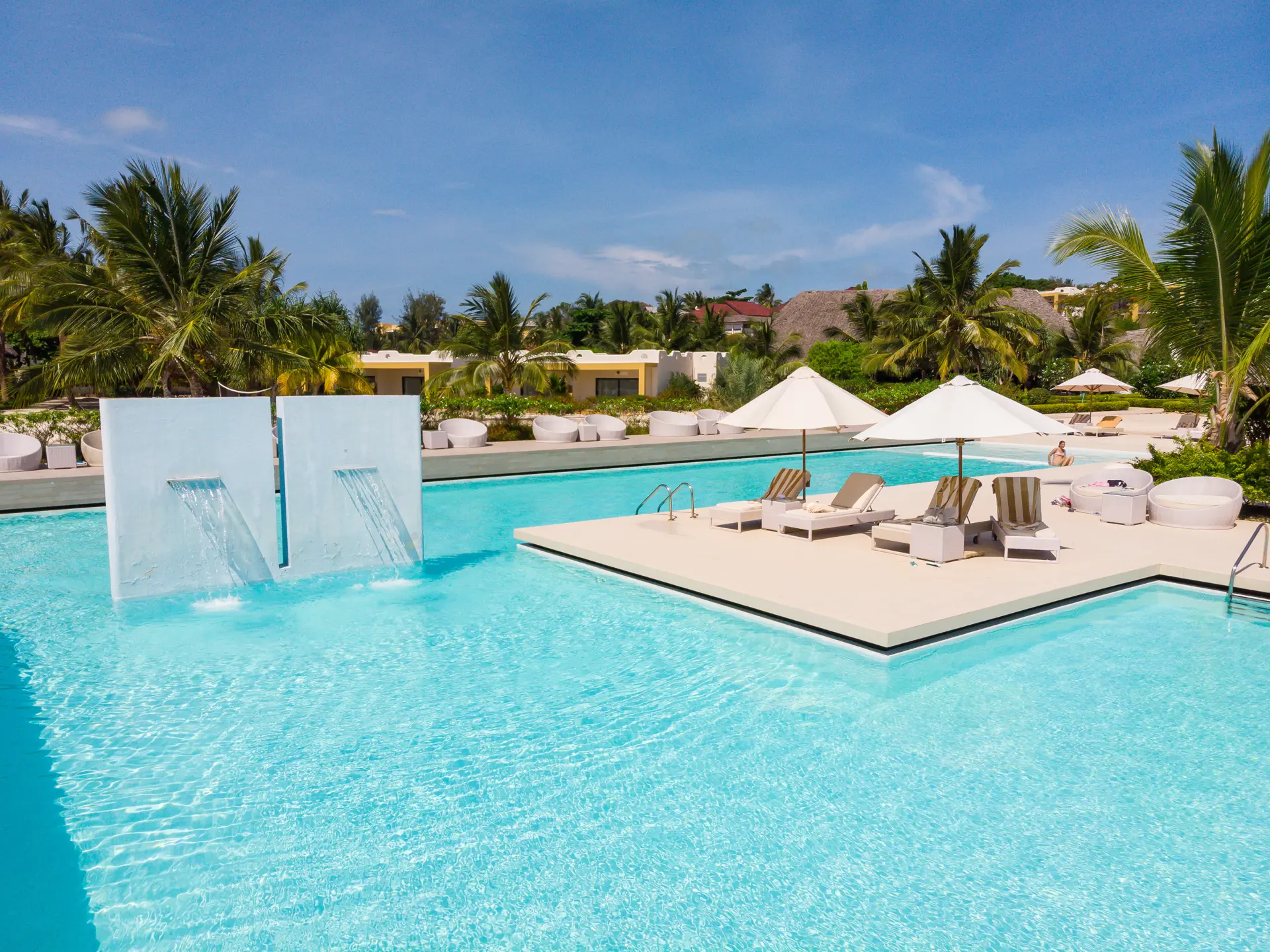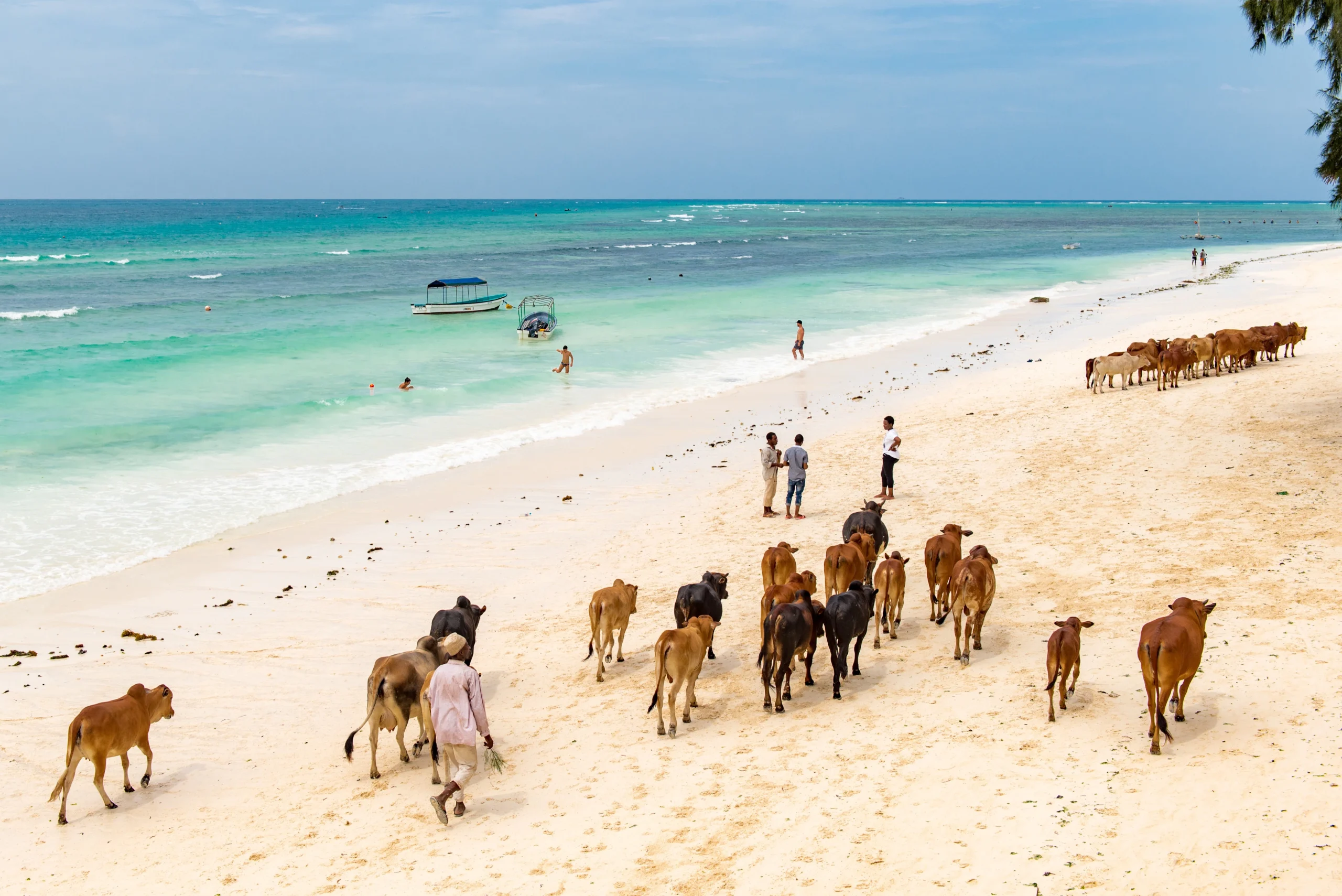FAQs About Kendwa Beach Zanzibar. What is Kendwa Beach known for? Kendwa Beach is well-known…

What To Bring When Hiking Rwenzori Mountains?
What To Bring When Hiking Rwenzori Mountains? Here are some necessary items to pack when organizing your hiking trip to the Rwenzori Mountains in Uganda:
- Bag for sleeping
Any investment in a nice sleeping bag is worthwhile because the nights in Rwenzori may be rather chilly. We advise using a sleeping bag with a minimum temperature rating of -10 degrees Celsius (14 degrees Fahrenheit) because of the altitude. The best form and shape to use is a mummy since it suits the human body’s curves and provides the best insulation.
- Big Duffel Bag
Your stuff, including clothing, sleeping bags, and other items, are intended to be transported in this big duffel bag. Since a porter will frequently carry this on his or her head, it is advised that you keep it as light as possible and limit its weight to 20 Kg. For ease of carrying, your duffle bag should be waterproof, have a strong zipper, and both a hand and a shoulder strap.
- Backpack
While ascending the Rwenzori, you will be carrying your daypack. In your day bag, you’ll keep valuable, private, and breakable stuff like cameras, phones, laptops, and other gear.
It is crucial to choose a lightweight backpack because any extra weight on long excursions is considerable. Rain protection, a mesh side pocket for your water bottle, and compression straps to lighten the load on your back should all be included in your backpack.
- T-shirts with long sleeves
T-shirts don’t take up much space and dry quickly. For this reason, having multiple T-shirts to wear throughout the hike is great.
More form-fitting t-shirts work better as insulation in the frigid mountain air as you ascend higher. T-shirts made of cotton can be worn at lower elevations, but cotton is a troublesome material further up since it retains water and takes a while to dry. T-shirts made of polyester are suggested.
- Ski Jacket
You should have a ski jacket for the snow and ice if you intend to tackle Mount Baker or Mount Stanley. Since you’ll perspire while climbing, a good ski jacket should be both water-resistant and breathable.
- Hiking trousers
Bring a pair or two of hiking pants to wear while climbing the mountain. Bring some zip-off hiking pants that can easily be changed into shorts if you want to wear shorts. You are welcome to wear your jeans, but we advise against it. This is due to the fact that jeans soak up a lot of water and take a while to dry, which can be a hassle if it rains while you’re hiking.
- Trekking sticks
The Rwenzori Mountains in Uganda are difficult on your primary joints and ligaments, and the climbs up and down them are long and strenuous. With daily climbs lasting more than 5 hours, trekking poles will come in handy and help you at every turn.
- A number of pairs of warm socks
You also need to have a lot of socks if you want to climb Mount Rwenzori. With daily treks lasting, on average, six hours, having a fresh pair of socks every day will be helpful. Socks that are warm but breathable are recommended. For the extremely chilly evenings as you get closer to the peaks, you might also need extra socks. Each person needs a different number of pairs, but it’s generally a good idea to have extra pairs on available.
- A poncho
The best weather protection for you and your daypack is a poncho. It functions so well because it is portable, waterproof, and can be compacted without needing to dry. A poncho offers no insulation and shouldn’t be included in the layers you wear on your vacation to stay warm.
- Boots for hiking
The best pair of climbing shoes or boots should be purchased if you plan to ascend Mount Rwenzori on foot because that is how you will do it. You ought to wear sturdy yet supportive footwear. Any minor concerns you have about a pair of shoes could jeopardize the rest of your trip, especially if they are too tight or too loose.
- Ankle Gaiters
Wading through mud and across rivers and streams are required when climbing the Rwenzori. In order to keep the mud and water out of your shoes, you will need a sturdy pair of ankle gaiters.
- Gloves
Also available are heated inner gloves and insulated or mitten gloves. Your hands and fingers will be shielded from the savage cold of the mountains by gloves. You should carry two pairs of gloves, it is advised. An outer set of waterproof, durable mittens or gloves that can survive the elements. Additionally, you ought to have a pair of thermal inner gloves on your hands.
- Basic Cleaning Supplies
Don’t forget to bring your deodorant, soap, toothbrush, and toothpaste. Such a long packing list could make one forget vital personal goods. You might have to wait until the end of the climb to get replacements if you forget any of these. Since they are all small and lightweight, they can all be brought from home or bought before starting the climb.
- Hand towel
a medium-sized trekking towel to use after a downpour to dry your face and hands. Because microfiber towels dry so quickly, they are recommended.
- Toilet Tissue and Lip Balm
The cold you may experience when you climb Mount Rwenzori may quickly dry you out and cause chapped lips. Lip balm will help to nourish and soothe dry or chapped lips.
Although there is toilet paper available at the beginning of the trek, having extra is always a good idea. Having more is preferable to running out when out in the snow. It should only take one roll, but don’t be scared to try other things.
- Insect Repellant and Sunscreen
We advise you to carry mosquito repellent with high concentrations of DEET even if you have already finished your malaria preparations and are not at risk of getting the illness. This is due to the fact that mosquito bites are uncomfortable and, for some people, painful. There are other insects, and this insect repellent will deter them. The insects get fewer and fewer as you go higher and the temperatures drop, but they are very abundant at lower elevations.
When hiking during the day, you must shield your skin from the sun’s UV rays. You should pack sweat-resistant sunscreen because the strenuous climb will make you perspire.
- Malaria Tablets and any other medication that you may need
The most prevalent and lethal disease in the tropics is malaria, so it is important to look into every preventative measure. To avoid becoming sick when climbing Mount Rwenzori, you might need to take antimalarial medication. You should consult your doctor about this and heed all of his or her professional recommendations.
Along with your regular medications, you should have some on hand for the symptoms of your body adjusting to rapidly changing altitude levels, such as nausea, vomiting, and diarrhoea. To cope with the weariness that comes with hiking all day for so many days, you should also bring some painkillers.

- Blister Plasters
Blisters will almost surely develop from trekking for so long each day; these blisters should be appropriately treated with the right plasters — and wrapped if required. Make sure the area surrounding the blisters is totally dry before applying plaster to them. Masking tape, or any tape for that matter, shouldn’t be applied because it won’t allow air to pass through and will only make the blister worse.
- Bottled Water
You will need to drink water when you climb the Rwenzori because of how active you will be and how quickly you will become dehydrated. In addition to quenching your thirst, you must consume 2 to 3 litres of water daily to prevent altitude sickness. Two litre bottles could be brought because your daypack can accommodate them.
- Headlamp
To see at night on Mount Rwenzori, you’ll need a flashlight or headlamp because there is no electricity there. A headlamp is ideal because it allows you to keep your hand free, even though a hand torch can be carried. This is especially important for peak climbs that start at 2 a.m. in the wee hours of the morning. When selecting a headlamp, take into account the weight, battery life, and brightness quality, which should be at least 70 meters. These three characteristics should be well-balanced in a good headlamp.
- Ice Axe
This is for climbing Mount Stanley and Baker, whose tops can be reached via a snow trail. The best snow/ice trekking equipment for both ascending and descending is an ice axe. Although ice axes can be rented prior to the hike, seasoned mountaineers typically bring their own because they are accustomed to using them.
- Crampons
Your steadiness in the snow will enhance thanks to the crampons on your climbing shoes. While climbing Mount Stanley or Mount Baker in the Rwenzori, crampons are necessary.
- Scarf
A neck scarf or warmer is an additional necessity to pack. Given the chilly air and brisk altitude, a neck warmer will be useful. Instead, you may pack a scarf that serves as a neck warmer. If you can come up with any extra uses for a scarf, that would probably be the best option.
- Reuseable plastic bag for dirty laundry
On the mountain, there is so much water that you ought to be able to wash some of your unclean clothing. The issue is that you’re worn out and would prefer to put everything off till you’re back down. You may separate your clean clothes from your filthy clothes by using a resealable plastic bag. If you manage to wash from the top of the mountain despite your tiredness, good for you!
It’s one of the most challenging endeavors anyone can go on to climb Mount Rwenzori in Uganda. Since the Rwenzori is a mountain range, getting to the summit involves taking several straight uphill paths. This is not the case with typical mountains, where climbing is required to reach the peak. All of this suggests that the Rwenzori Mountains are more challenging to climb, despite the fact that its highest peak is the third-highest in Africa. Starting such a journey requires guts, so make sure you pack everything you’ll need.



